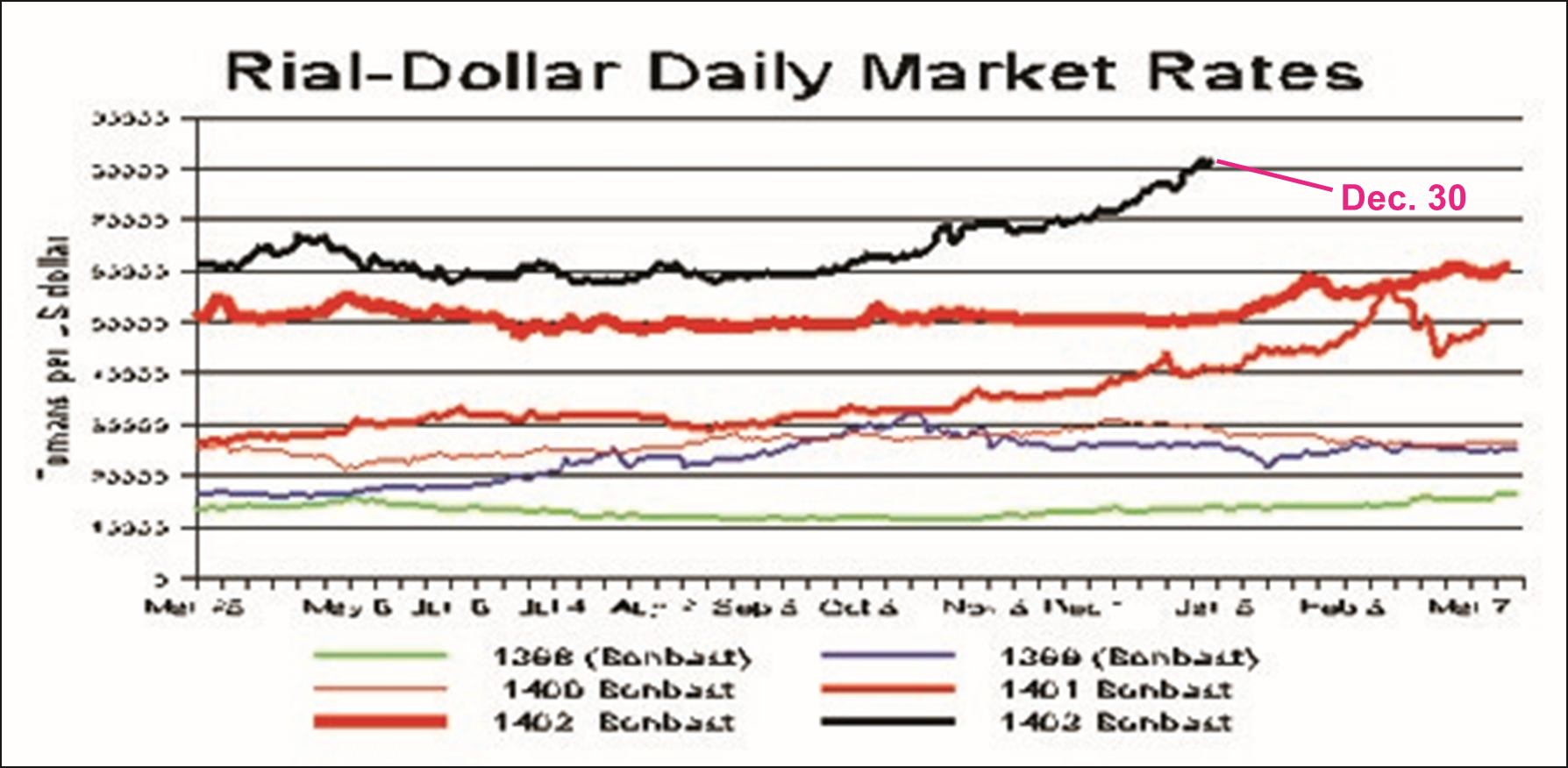January 17, 2025

On December 30, the governor of the Central Bank, Mohammad-Reza Farzin, charged that Bonbast, which has been reporting rial free market prices on a real time basis for years, had been set up deliberately to give wrong signals to people trying to buy foreign currency.
The next day, the Iran Times was unable to access the Bonbast website. And it has not been able to access it ever since. The price of the rial on December 30 was 821,000 to the dollar, which was its all-time worst.
No more recent prices have been posted. Farzin said Bonbast is based in the United States, which he said as if that were proof the website is anti-Islamic Republic. Farzin said the website has been creating turmoil and chaos in the free market by announcing fake prices.
He said the Bonbast website “that sets the dollar rate for Iranian exchange shops at 9 a.m. in the morning is registered in America and all its servers are also based in America…. All exchange shops in Iran follow the Bonbast rate.” To the contrary, Bonbast follows the exchange shop rates. The Iran Times does not know when Bonbast was established but has been tracking its posted rates since 2018.
Farzin didn’t explain why the Central Bank had waited so long without complaining if Bonbast had long been posting fake rates. But it was the regime that seemed to be promoting fake rates. Shortly before Farzin spoke out, the Mehr news agency said the US dollar was “crumbling” on the Tehran market. The dollar had sold for 821,000 rials on December 27 and then fell to 803,000 the next day, which the Mehr news agency said meant the dollar was “crumbling.” The next day the price was 821,000 again and Bonbast was then blocked.
On that one day drop in the price, PressTV, the English language outlet of state broadcasting, said the rial had “recovered” for two reasons because the government was pumping more foreign exchange into the market and because the public believed political tensions were easing.
(Farzin said publicly on December 17 that the regime was pumping more foreign exchange into the market.) Bonbast went dark shortly after businessmen in the Central Bazaar in Tehran staged a strike December 29 to protest the outof-control exchange rates. The strike reportedly began with shoe merchants but then swiftly expanded to cover the entire sprawling Bazaar.
The Iran Times saw no reports of violence, but the police presence grew markedly. The Bonbast attack also came just after the government announced on December 28 that it had launched a plan for the gradual elimination of the multitude of exchange rates that the government uses.
First Vice President Mohammad-Reza Aref announced, “The government’s strategy is to achieve a single exchange rate with a gentle slope until we reach a fixed rate.” But there could be no “gentle slope” if the rial kept losing value on the free market at its recent rapid rate. On the 29 days of December before Bonbast was blocked, the free market value of the rial set a new low on 16 days in other words, a new low virtually every other day.
The rial has been halved in value in just two years. It passed 400,000 to the dollar in December 2022 and 800,000 in December 2024. Here is how fast the rial has declined. The following table shows how many weeks it took for the rial to pass each 100,000-mark.
Passed on Weeks 300K 4 Dec 2021 — 400K 22 Dec 2022 55 500K 22 Feb 2023 9 600K 3 Mar 2024 53 700K 21 Nov 2024 38 800K 26 Dec 2024 5 It took a mere five weeks for the rial to drop from 700,000 to the dollar to 800,000 to the dollar a loss of 14 percent in little more than a month.
